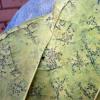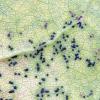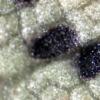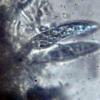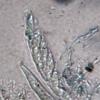
26-04-2013 21:07
Esquivel-Rios EduardoHi All.This ascomycete unknown was found in Coccol

23-04-2013 11:16
 Gilles Corriol
Gilles Corriol
Bonjour,Voici une récolte de Cheilymenia (GC13040

25-04-2013 15:07
 Chris Yeates
Chris Yeates
Bonjour touswhile studying Stomiopeltis betulae on

24-04-2013 23:37
Peter ThompsonHello Everyone,I have a collection of black, spher

22-04-2013 16:48
Hi to allCould this fungus be Leucostoma persoonii
Ascomycete in Coccoloba leaf.
Esquivel-Rios Eduardo,
26-04-2013 21:07
Hi All.
This ascomycete unknown was found in Coccoloba (Seagrape) leaf, causing small ascomata pseudothecioid, globose, applanate, smooth, erumpent. Asci clavate, 8 ascospores, fusiform, colourless, 1 septate. Any can help in the identification.?
Thanks.

